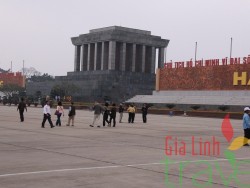Hanoi
Hanoi with other attraction
Hanoi Hanoi St. Joseph’s Cathedral Inbuilt European neo-Gothic style St. Joseph’s Cathedral dominates a small sq. in the heart of Hanoi’s tourist area facing a street of eating places and boutiques. It was one of many first buildings erected by the French colonists, and was completed in 1886 – most of the materials and a lot of the craftspeople were imported from France. Many of the stained glass windows are original and good examples of the craft. Mass is held twice daily (5am-7am and 5pm-7pm), however visitors can enter through a side door when the principle doors are closed. The Hanoi Citadel The Hanoi Citadel complex is in the means of being launched by the Army – two buildings at the moment are accessible, and more are to follow. A go to be beneficial! Originally known as the Dai La Citadel, King Ly Thai to rename it Thang Long (Ascending Dragon – the old name of Hanoi) Citadel when he chose it as his capital in 1010. Over many centuries various monarchs moved the capital to different places and their successors moved it again to Hanoi usually modifying and rebuilding parts of the Citadel a number of times. In 1888 the defeated Nguyen Dynasty surrendered the Hanoi Citadel to the French colonialists. Hanoi became a colonial city 66 years till the French have been expelled in 1954. Throughout their occupancy, the colonists broke down the walls of Citadel and destroyed many of the buildings inside. The outdated Watchtower remains, and affords an excellent view of the whole complex. In 2003, excavations on the site of a proposed new National Meeting building unearthed the remains of King Ly Thai To’s Palace, and with it a wealth of relicts, foundations constructing, wells, kilns and different stays that shed new mild on the early history of Thanh Long and the complex relationship between the cultures of Vietnam and China. The longer term destiny of the site just isn’t yet clear; however the archeological treasures that have been discovered are being catalogued and placed on display. The French Quarter A misnomer, really! Throughout the earlier years of colonization, building growth was on ‘concession’ land ‘leased’ by the Vietnamese authorities, the primary close to what is now the Opera Home and one other close to the railway station. Nevertheless, this face-saving pretence was quickly abandoned and French administration, navy officers and civil servants constructed extra or less where they wished, tearing down current buildings if necessary. The result is a wealthy heritage of magnificent mansions, villas and public buildings all through Hanoi’s central area. For anyone concerned about structure, a go to some of the best examples is a must! Early civil constructions such as the Opera House and St. Joseph’s Cathedral had been smaller replicas of their equal in France. To construct the Cathedral, a miniature of Notre Dame, certainly one of Hanoi’s oldest pagodas was destroyed to make the foundations. By the early years of the twentieth century, the style started to diverge from the French mainstream by incorporating Vietnamese and oriental parts to create a definite architectural genre. A stroll around the centre of Hanoi takes in buildings such the Opera Home, the Ministry of Overseas Affairs, the Presidential Palace and the Chinese language Embassy. With a Gia Linh Travel specialist guide, you will acquire a comprehensive overview of Hanoi’s colonial architectural heritage. Lenin Park Like most Vietnamese cities, Hanoi is skinny on public open spaces. The nearest equal is Lenin Park, a large lake surrounded by lawns and trees positioned south of the city centre. Compared with its equivalents in other Nonetheless, it’s a good place for a stroll, and there’s usually plenty going on. Jogging, badminton, impromptu video games of ‘da cau’ (a recreation involving keeping a form of shuttlecock within the air using only the toes), chess, maj-jong and snogging on the benches underneath the timber are all popular pursuits. For those who don’t mind traveling in a giant plastic swan, a ship on the lake is a pleasing diversion. There’s the Vietnam Circus constructing, a small amusement park and some statues and memorials; however the principle pleasure is the cool shade of the bushes on a hot day, and a partial respite from the roar of traffic.


large cities, it’s tiny. New York’s Central Park extends over 341ha, London’s Hyde Park measures 255ha, and Le Bois de Boulogne in Paris is a whopping 865ha. Beside these, Lenin Park is small beer – a mere 50ha, and most of that’s water.
